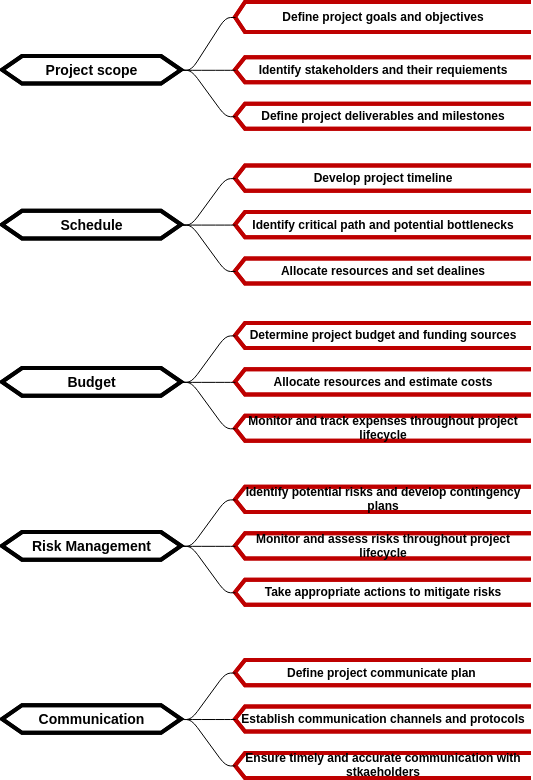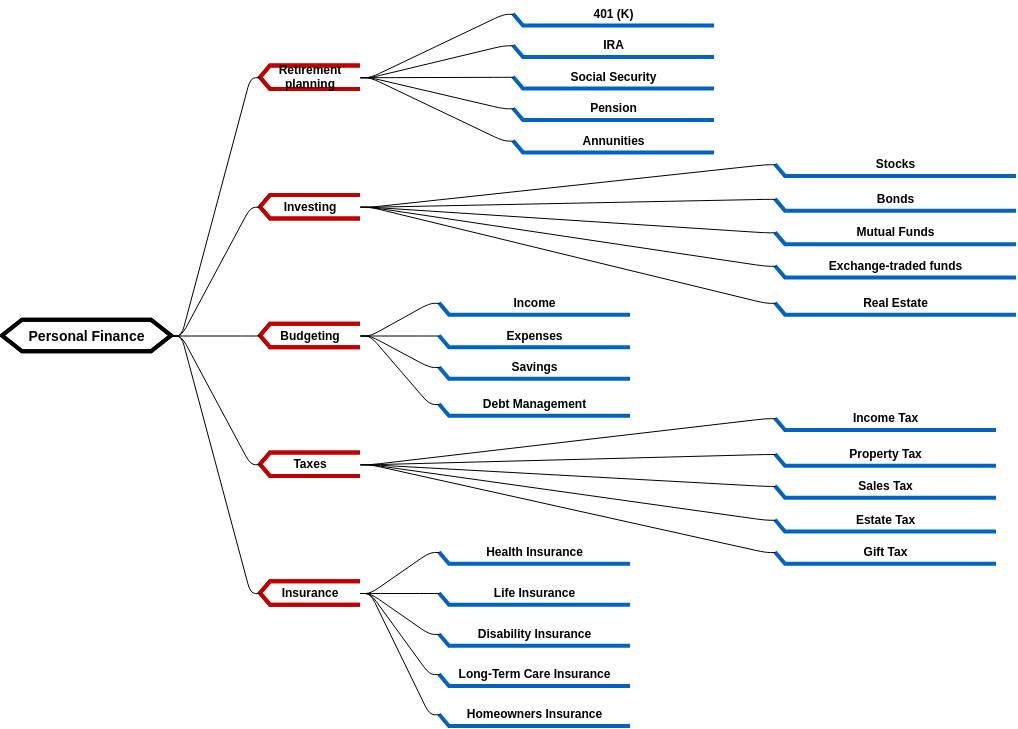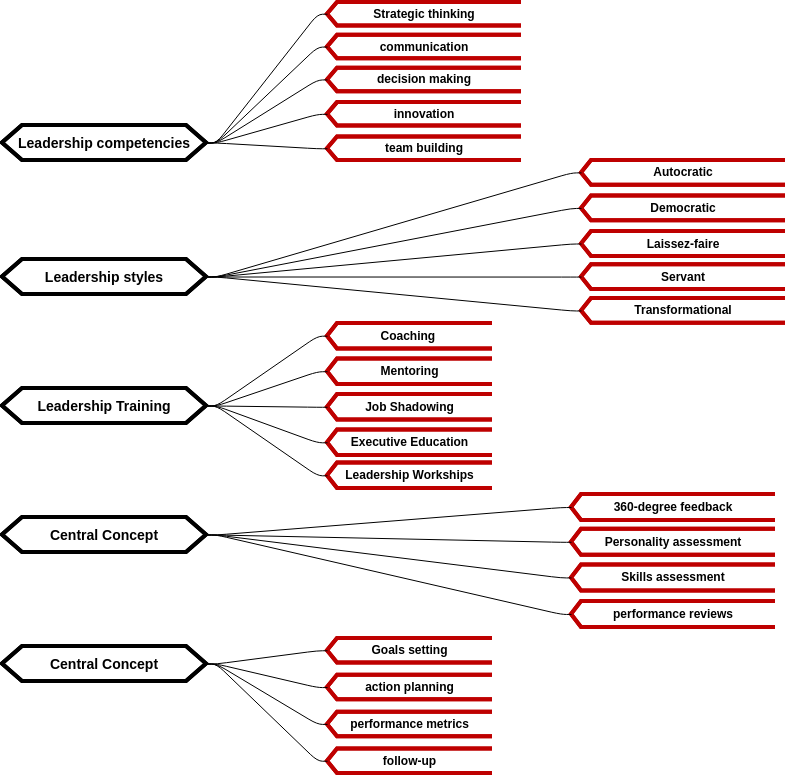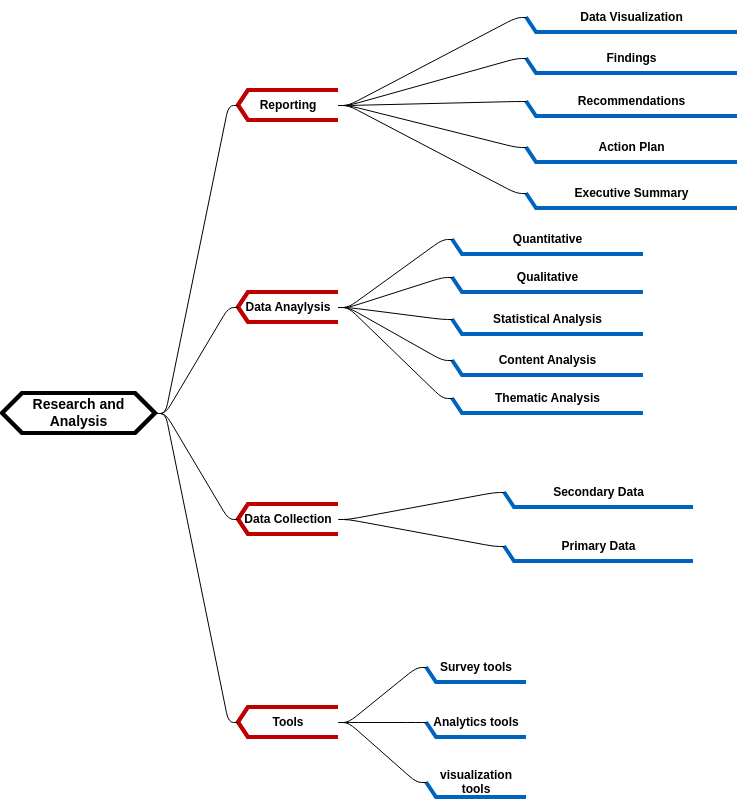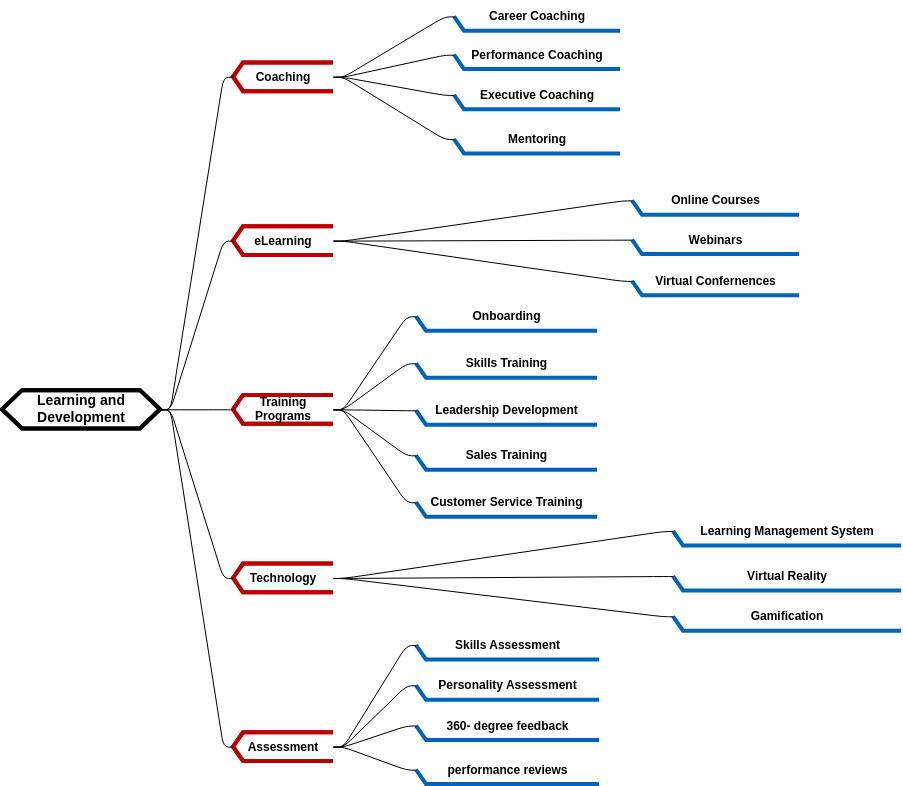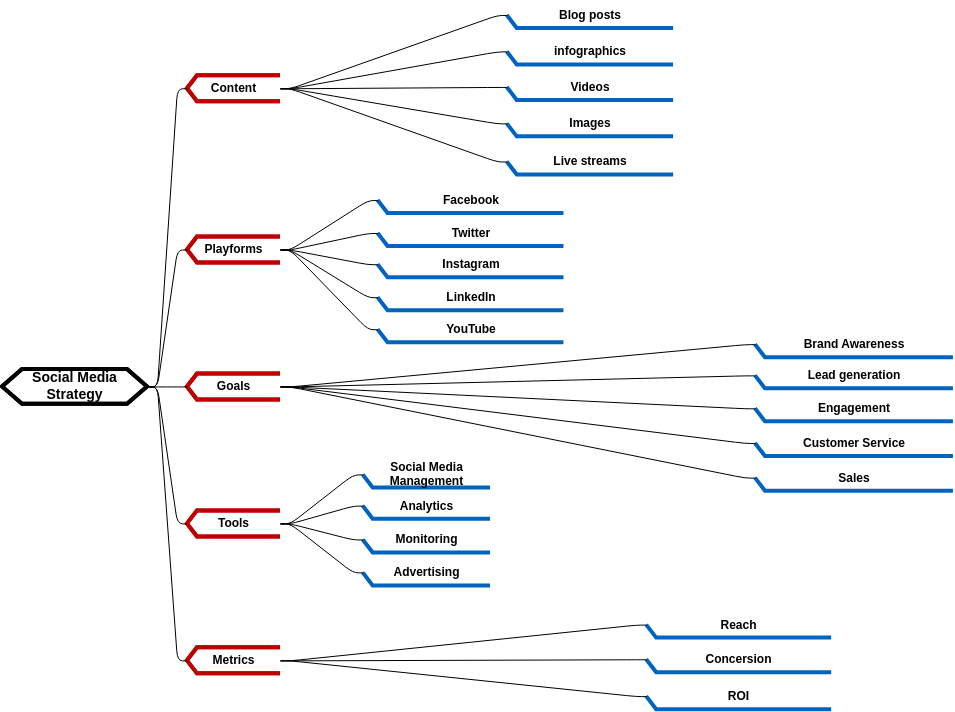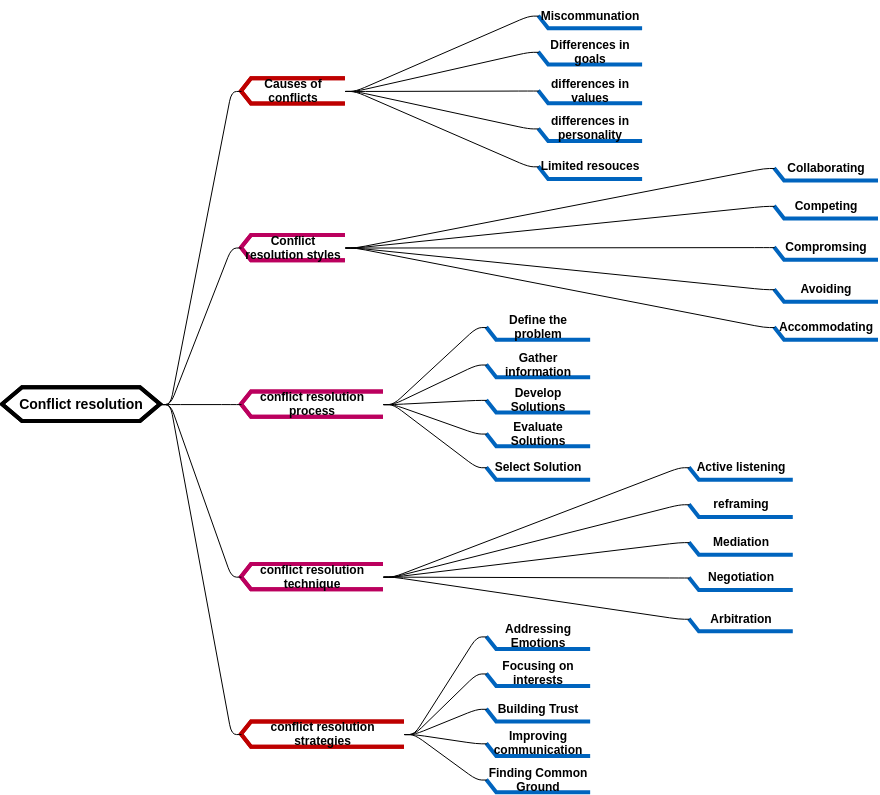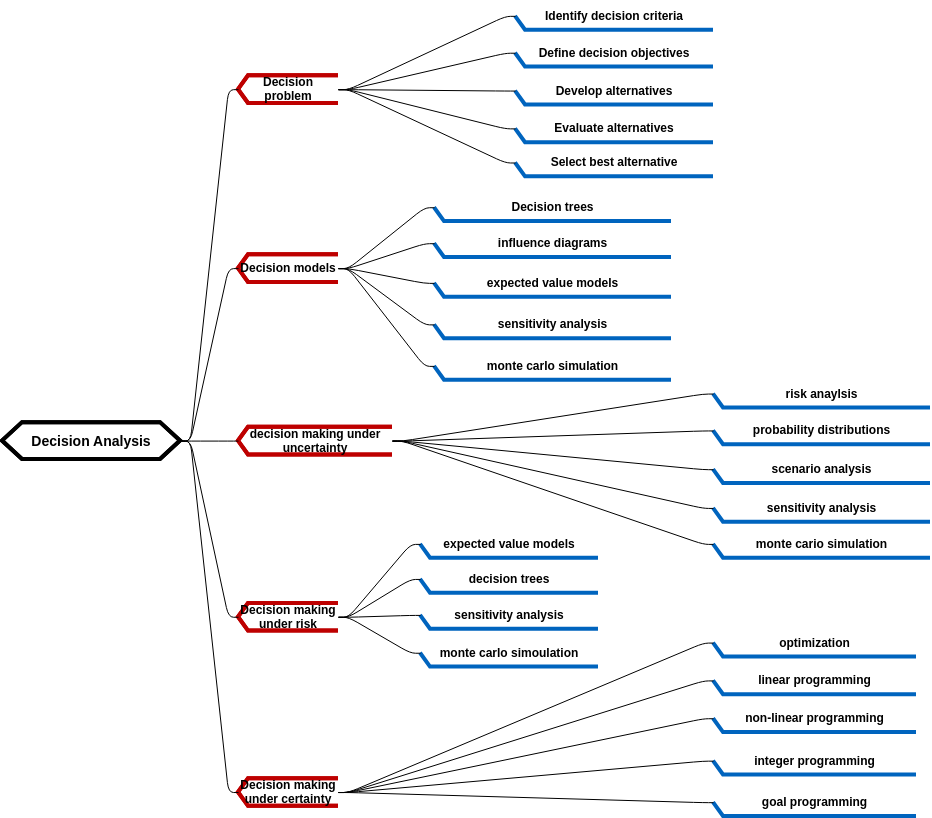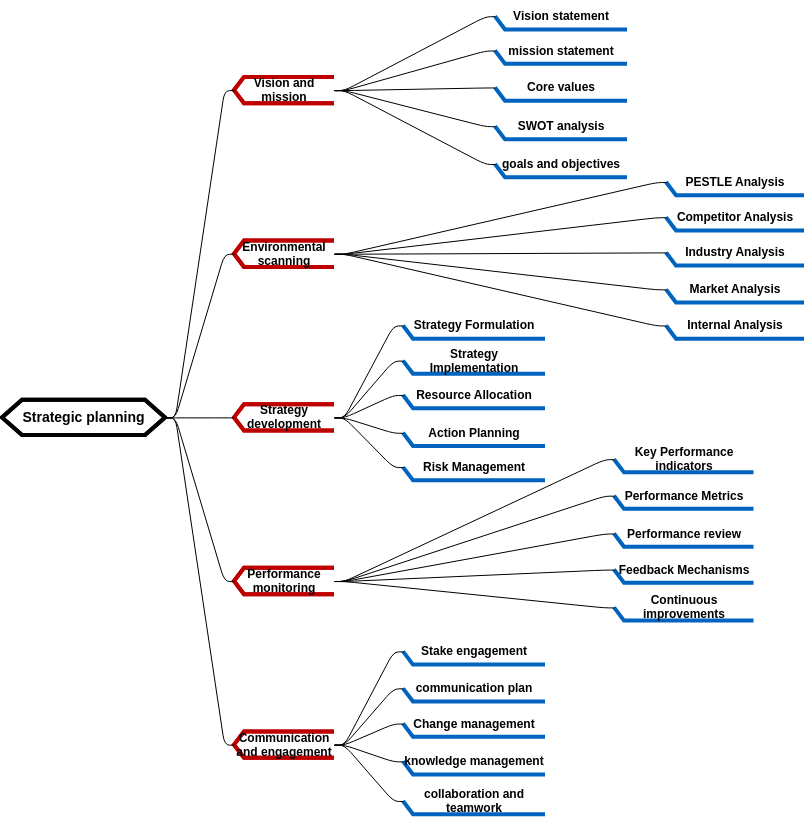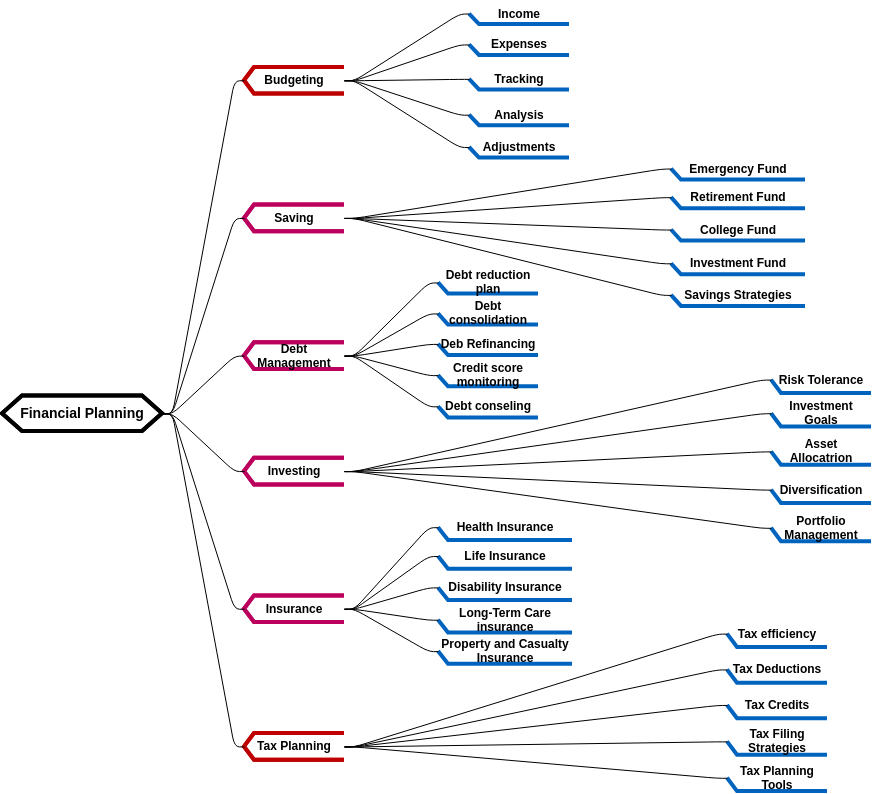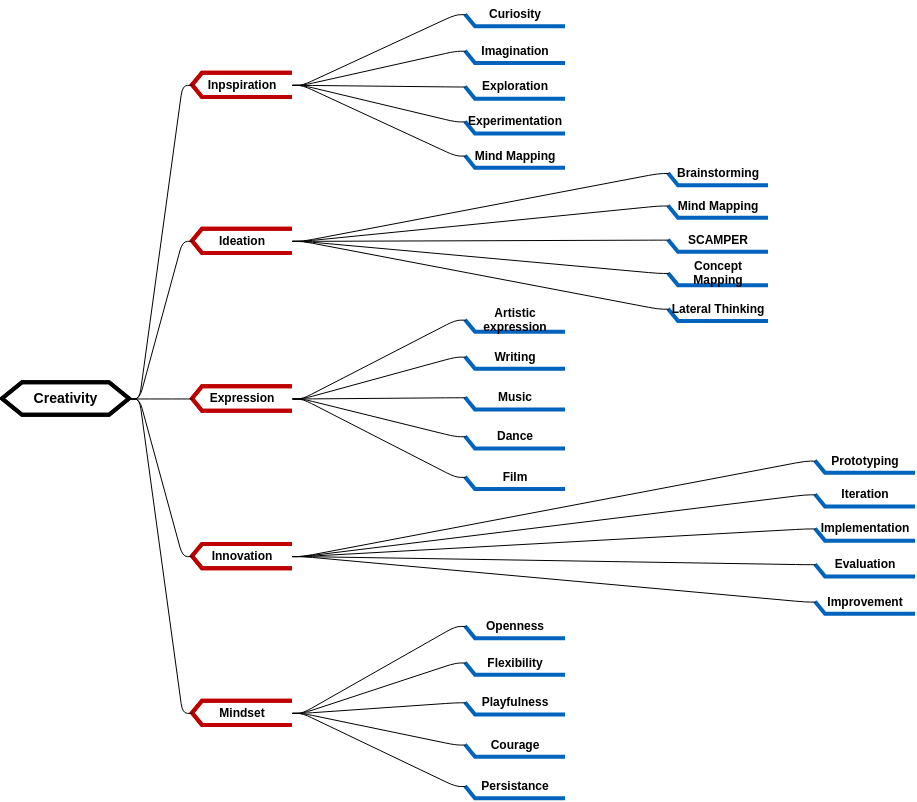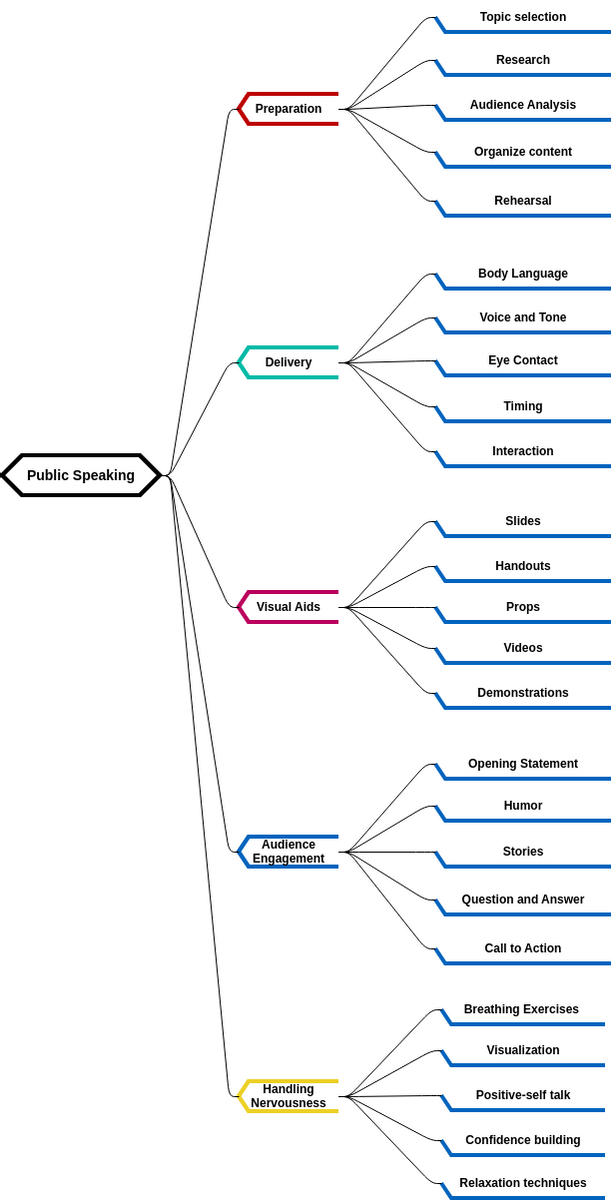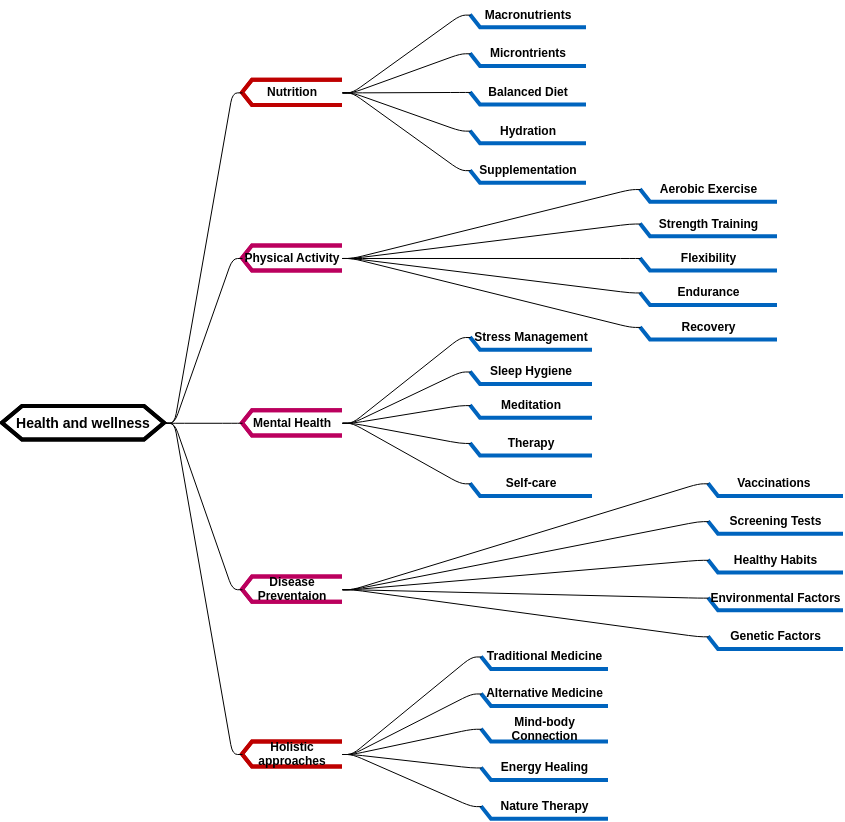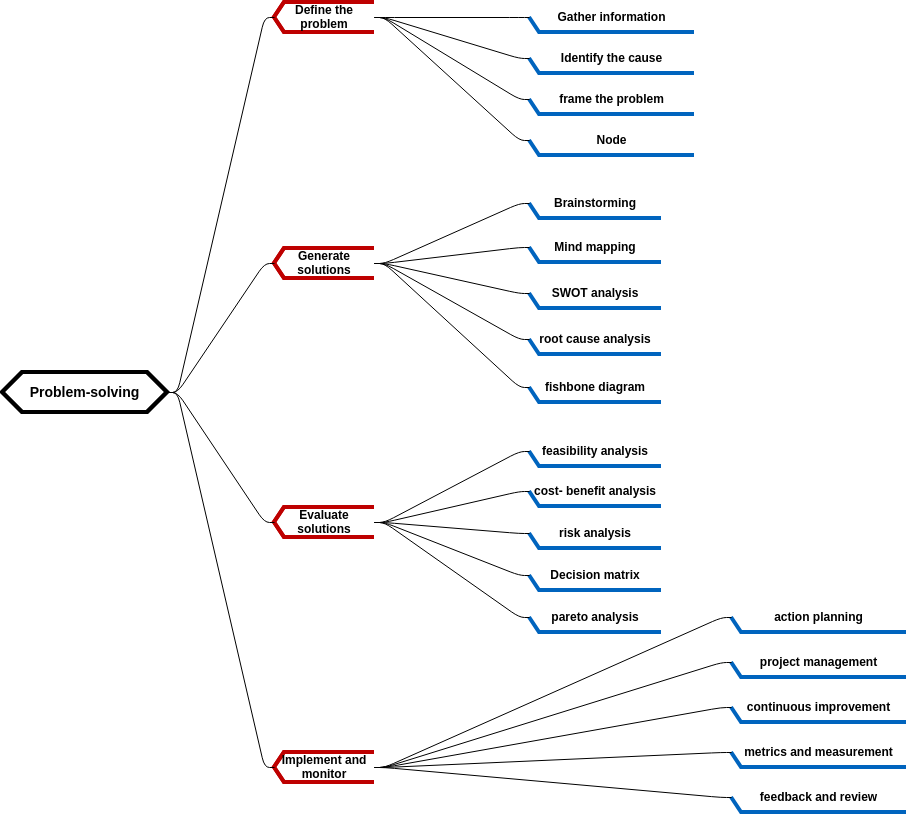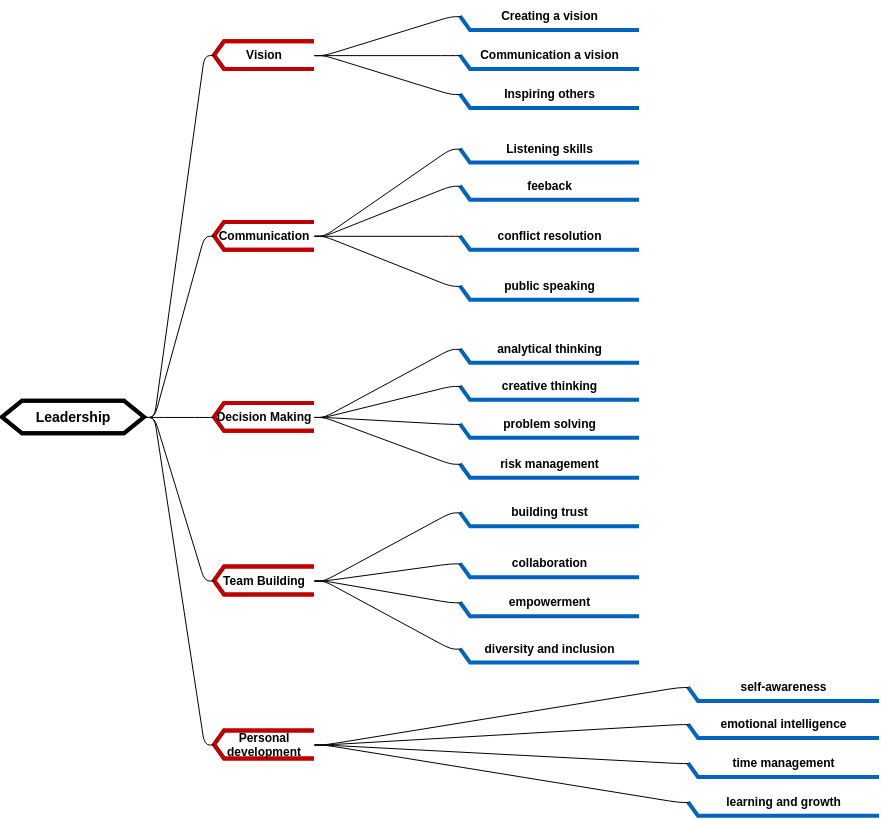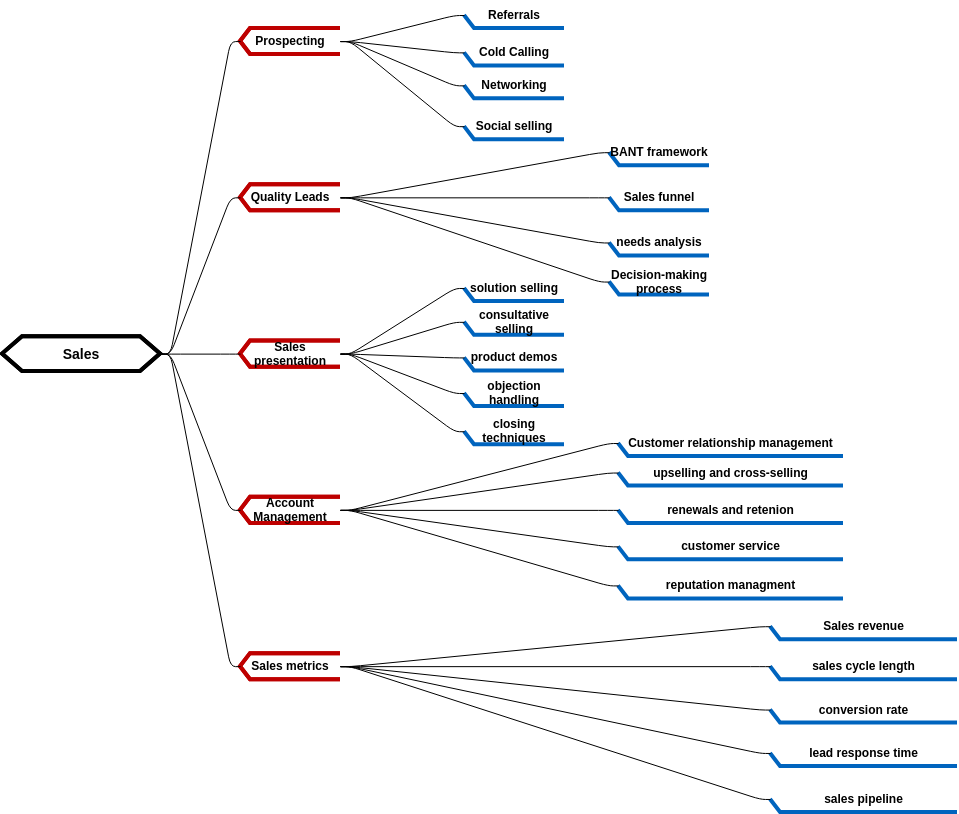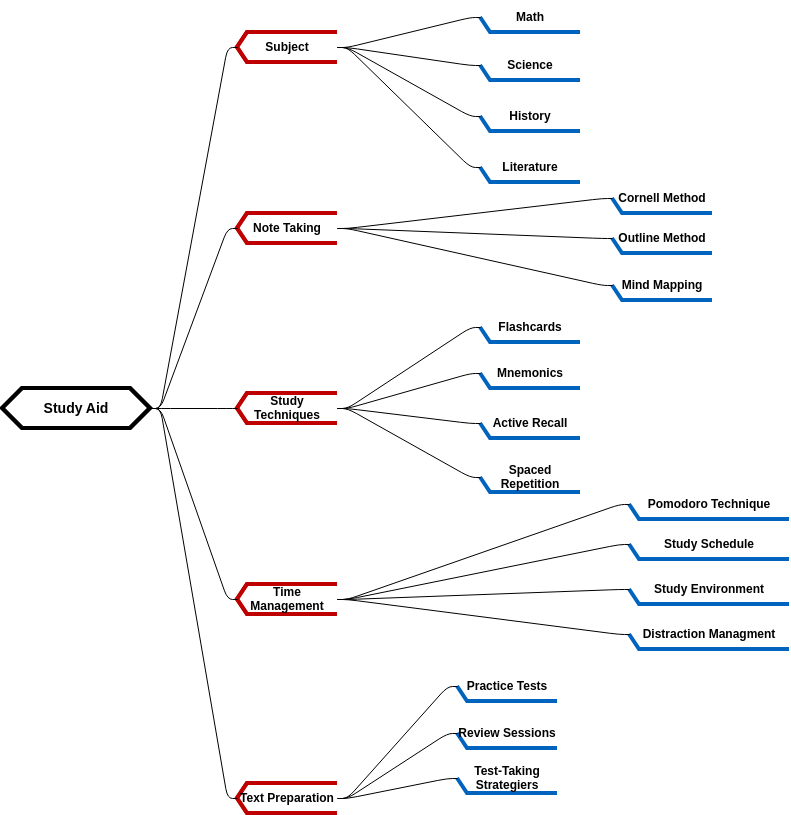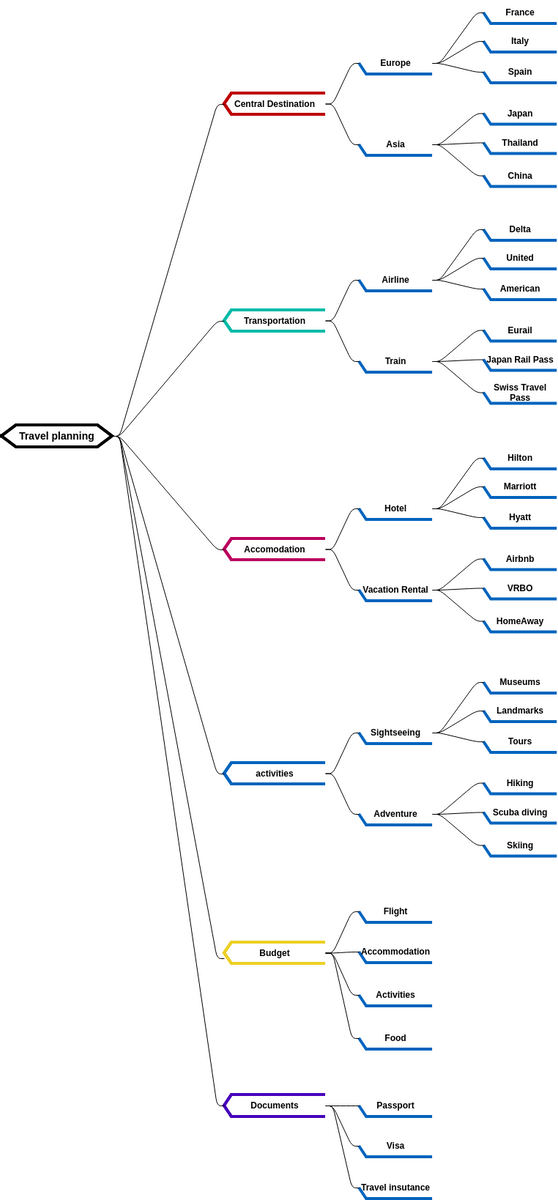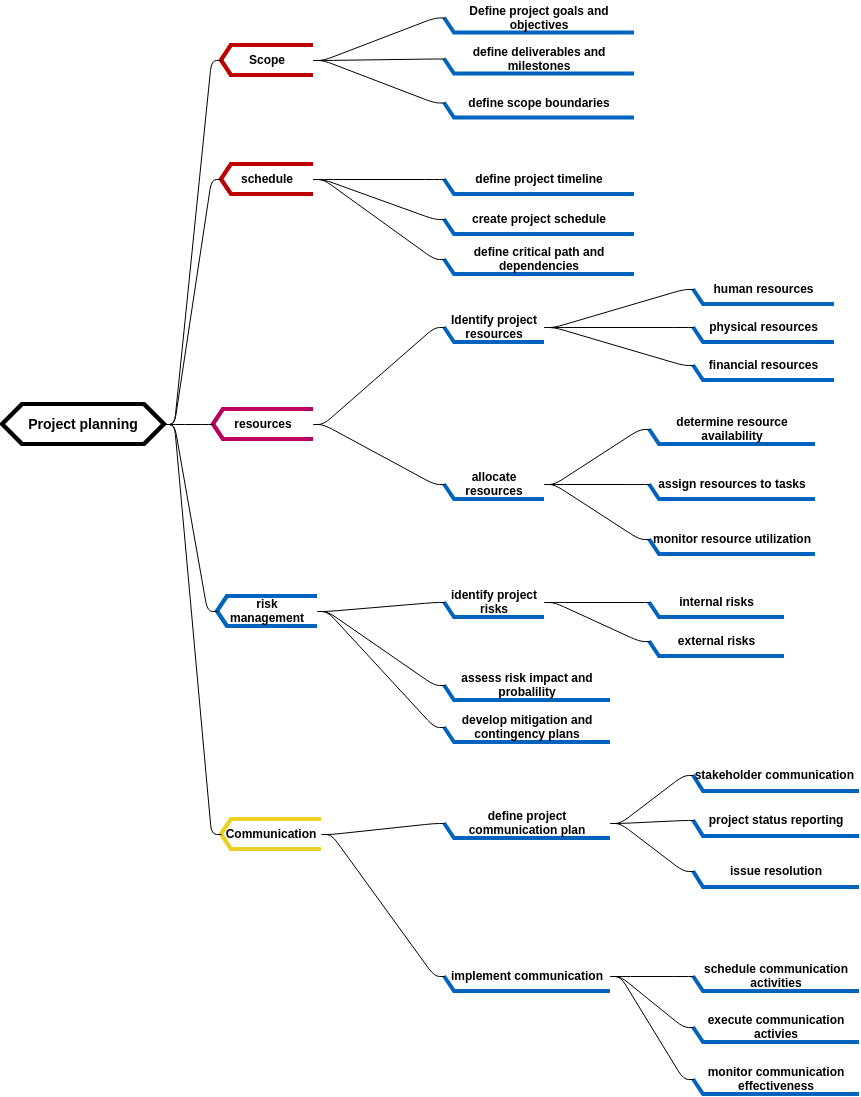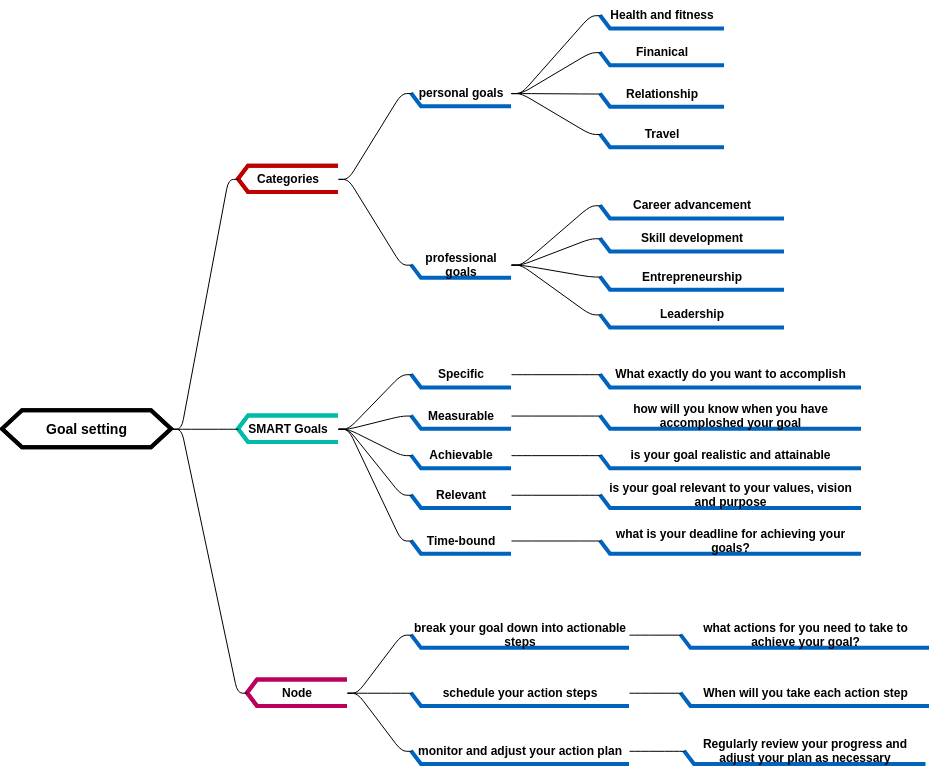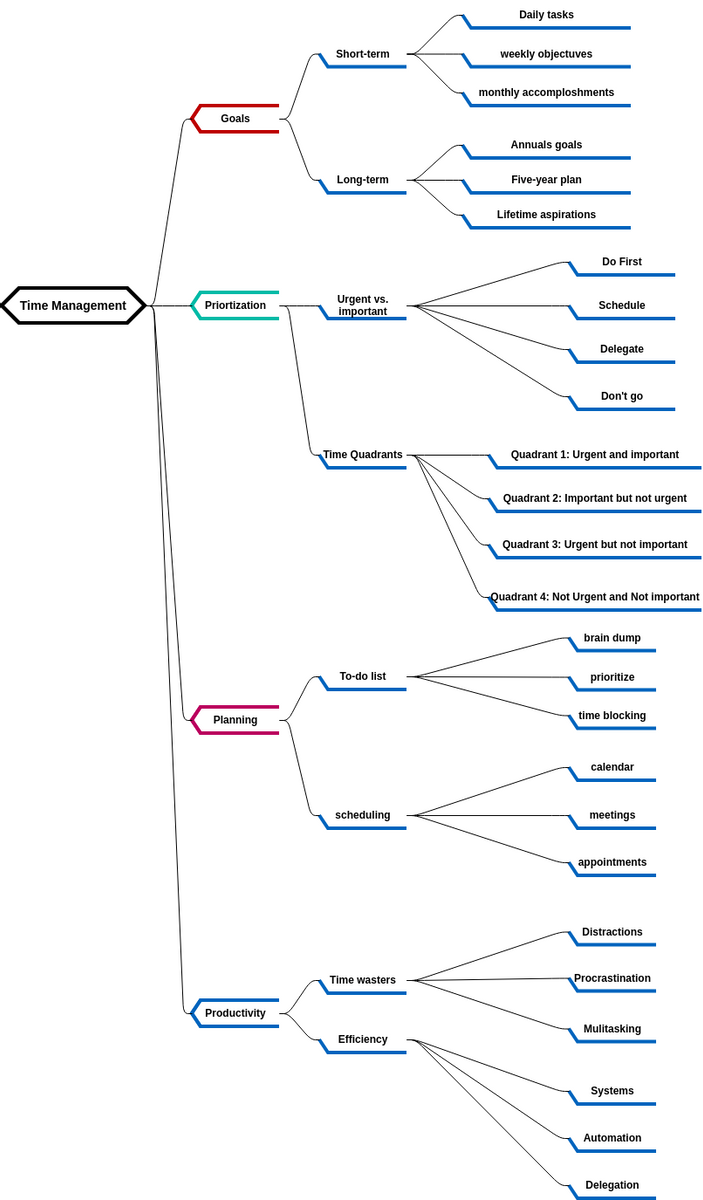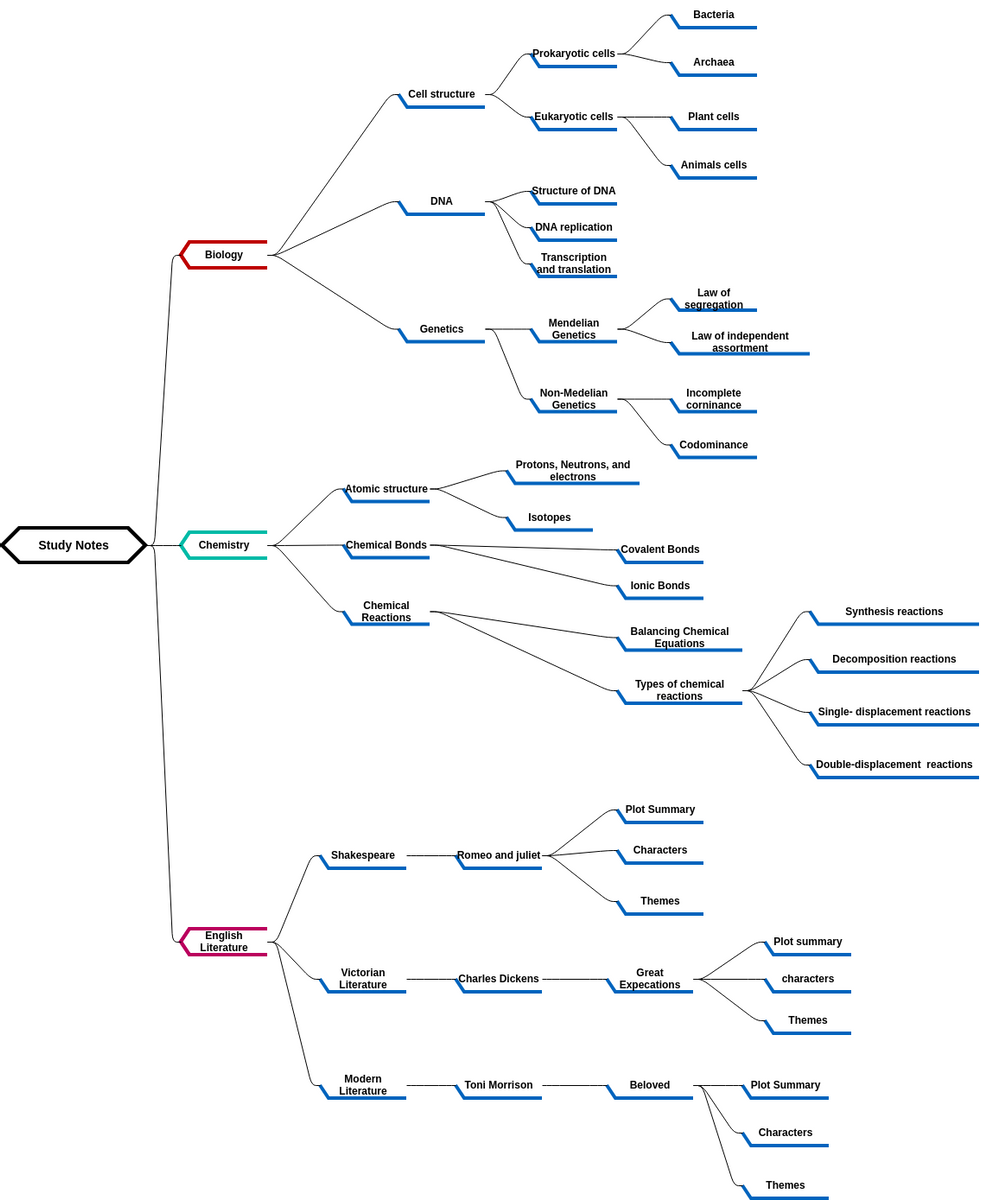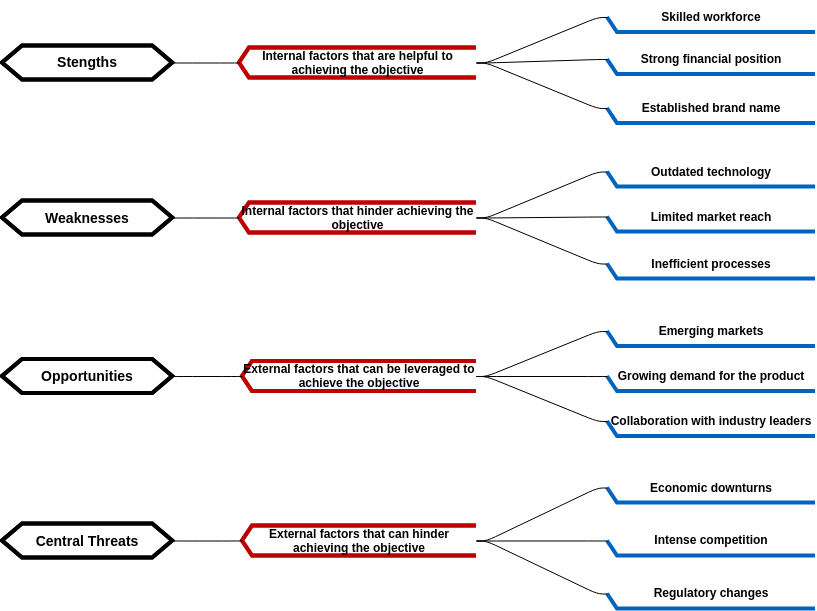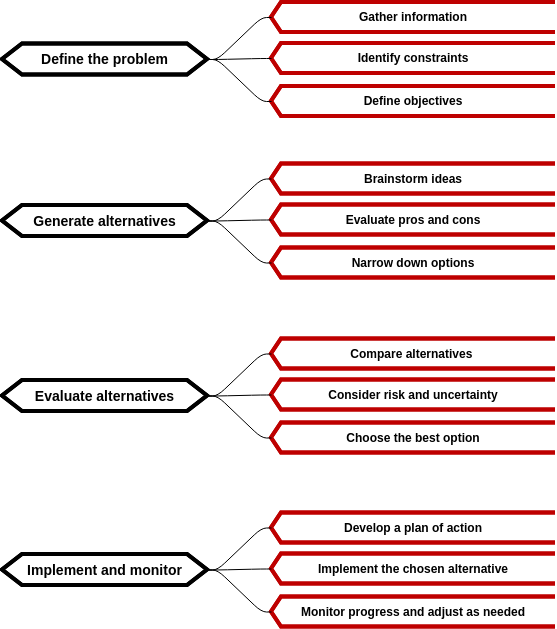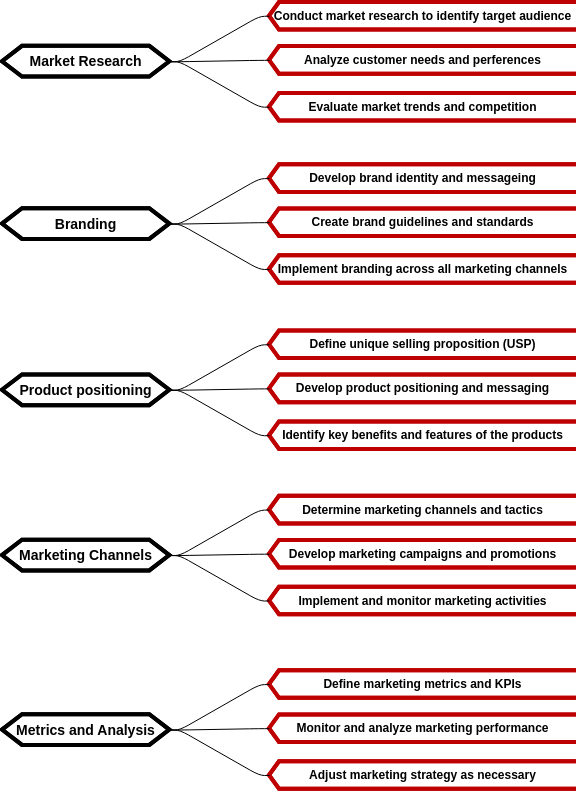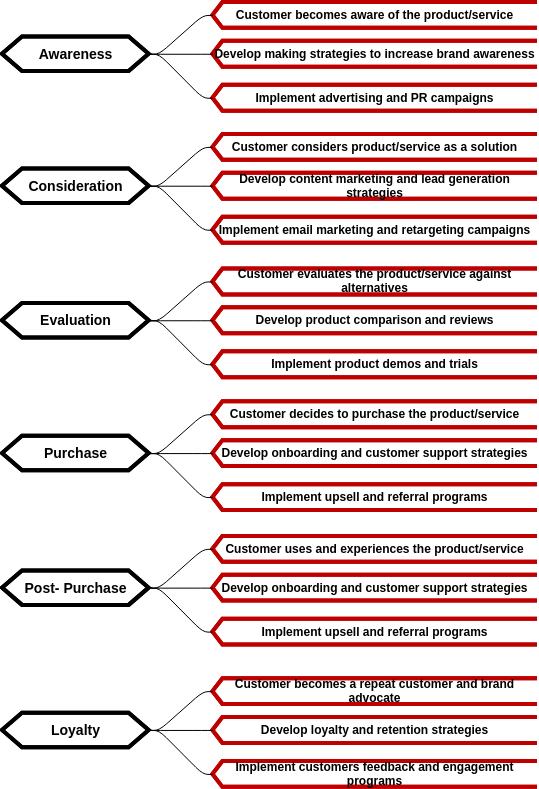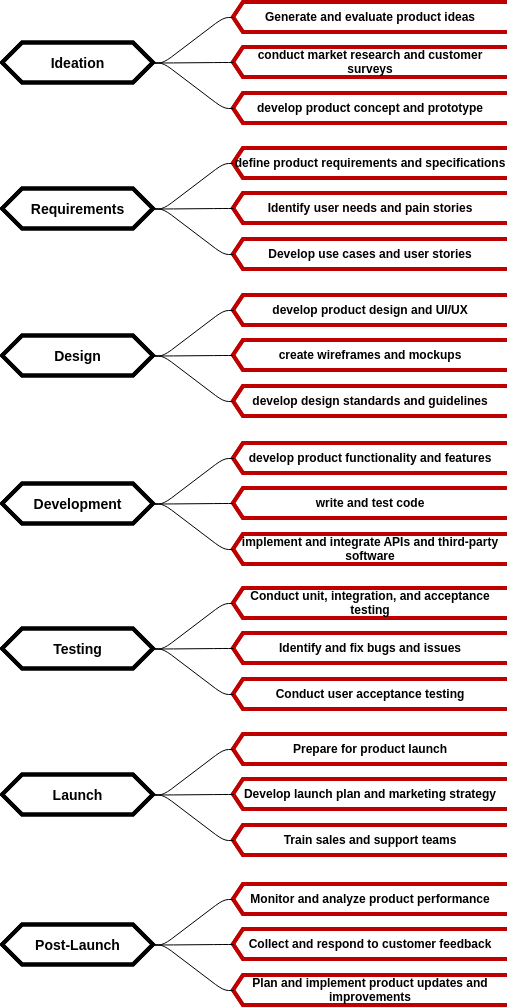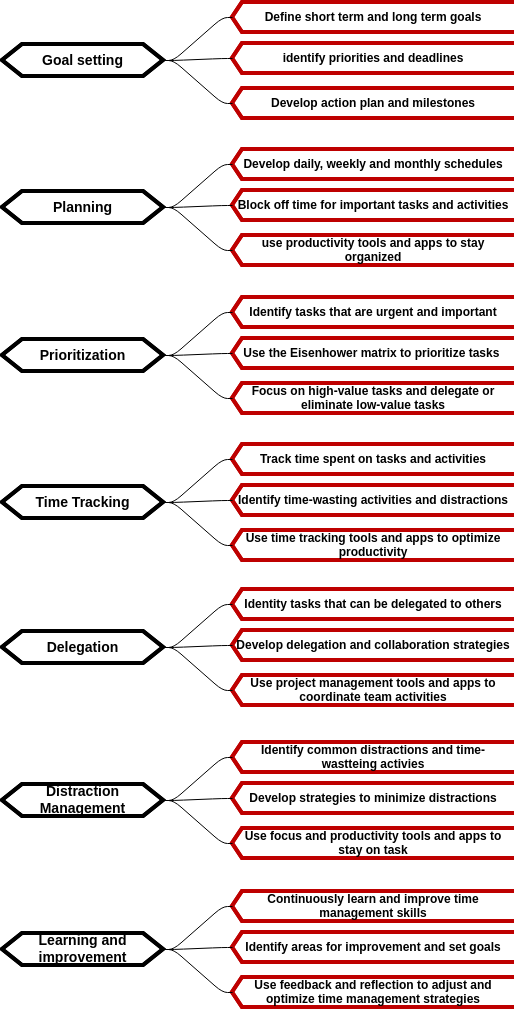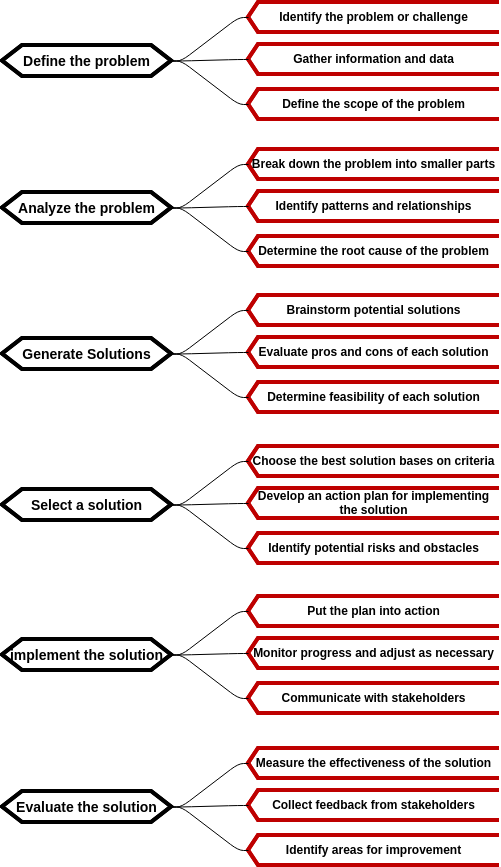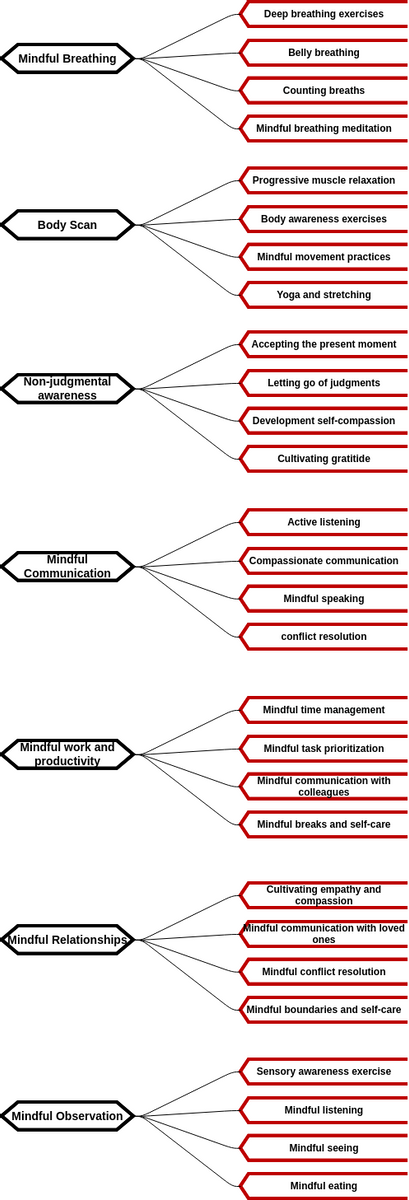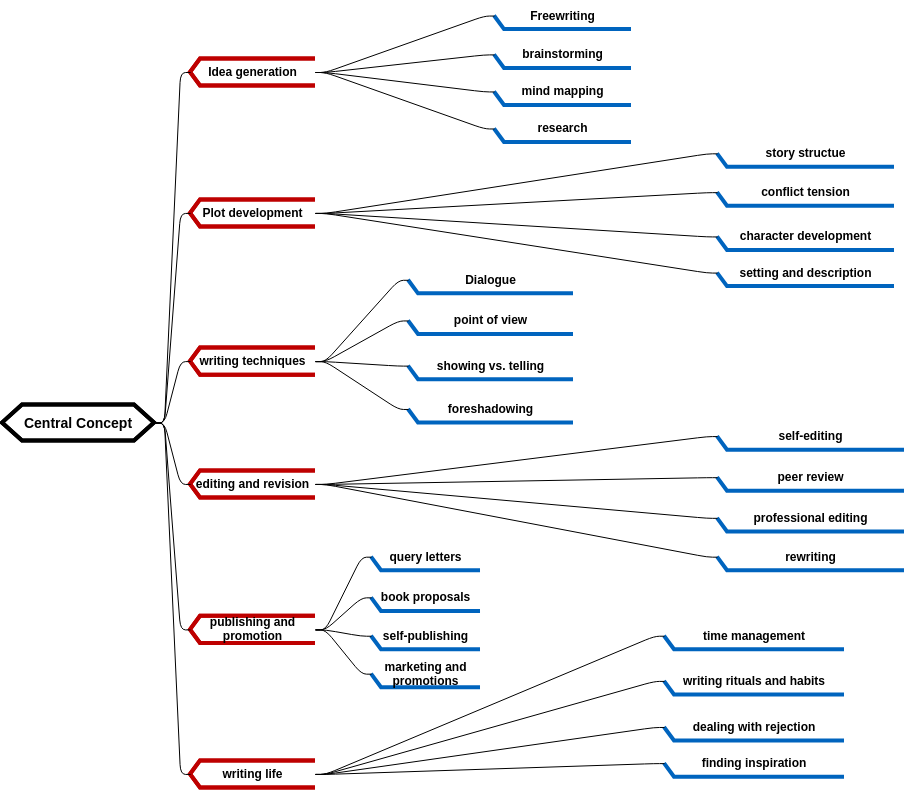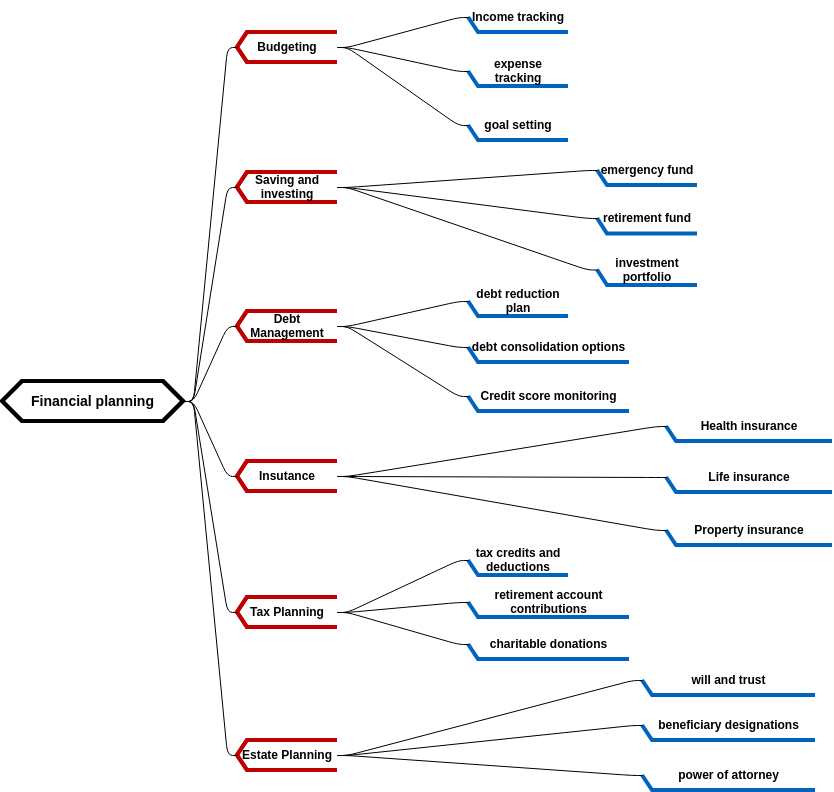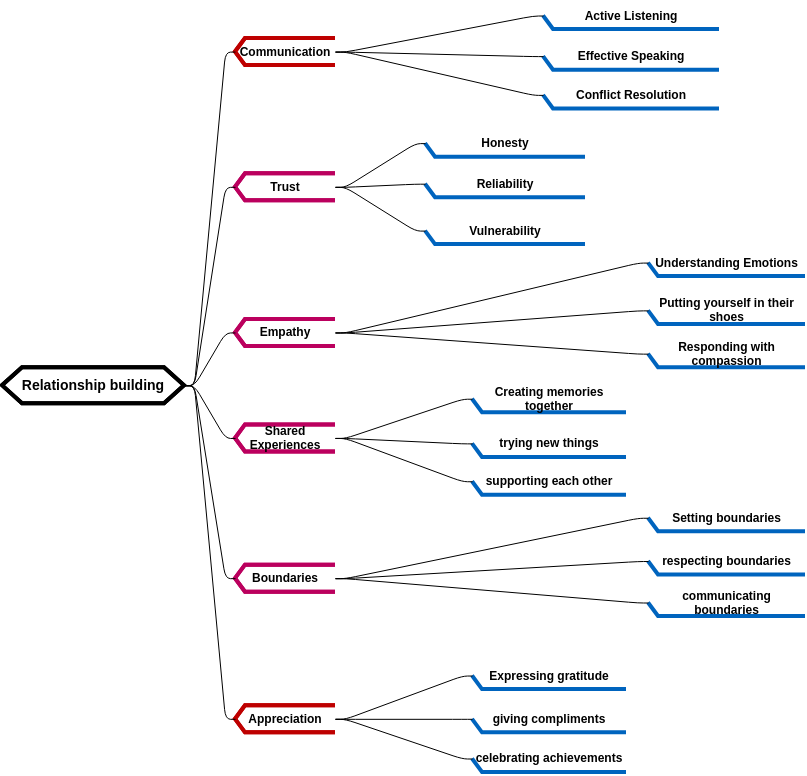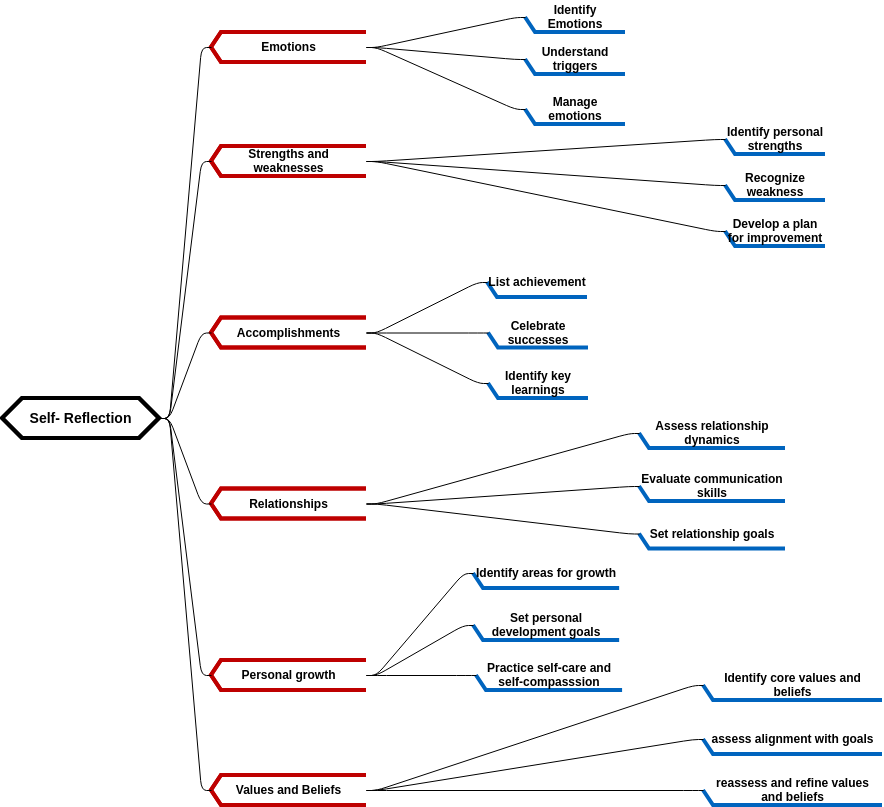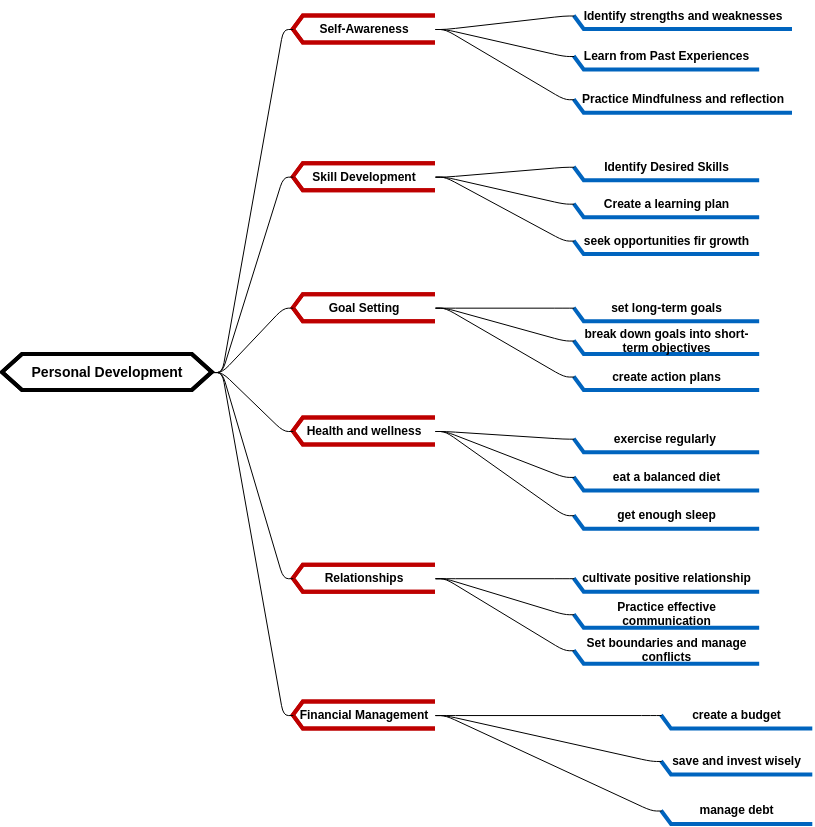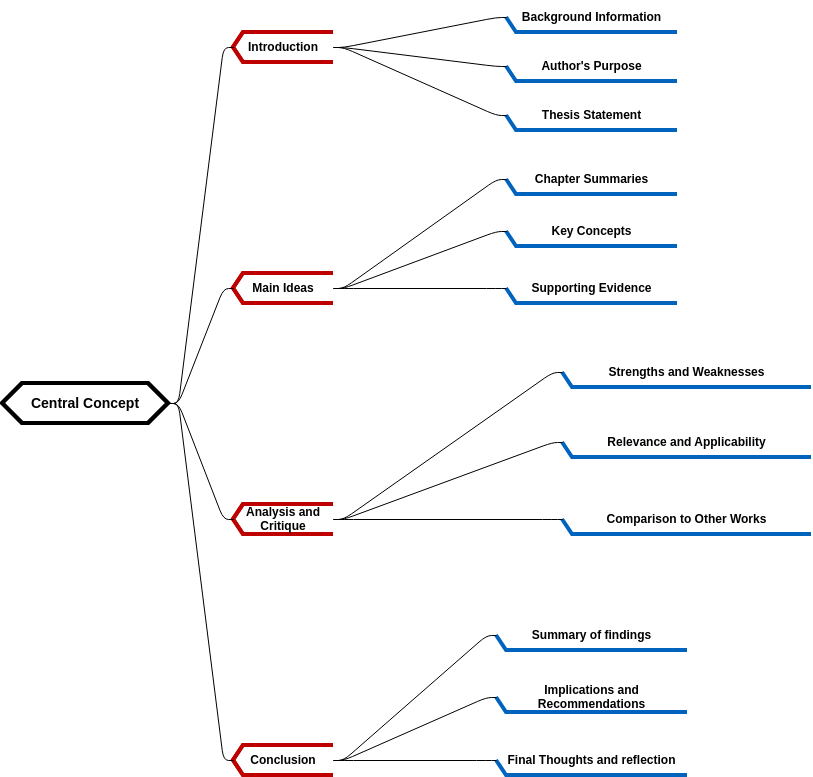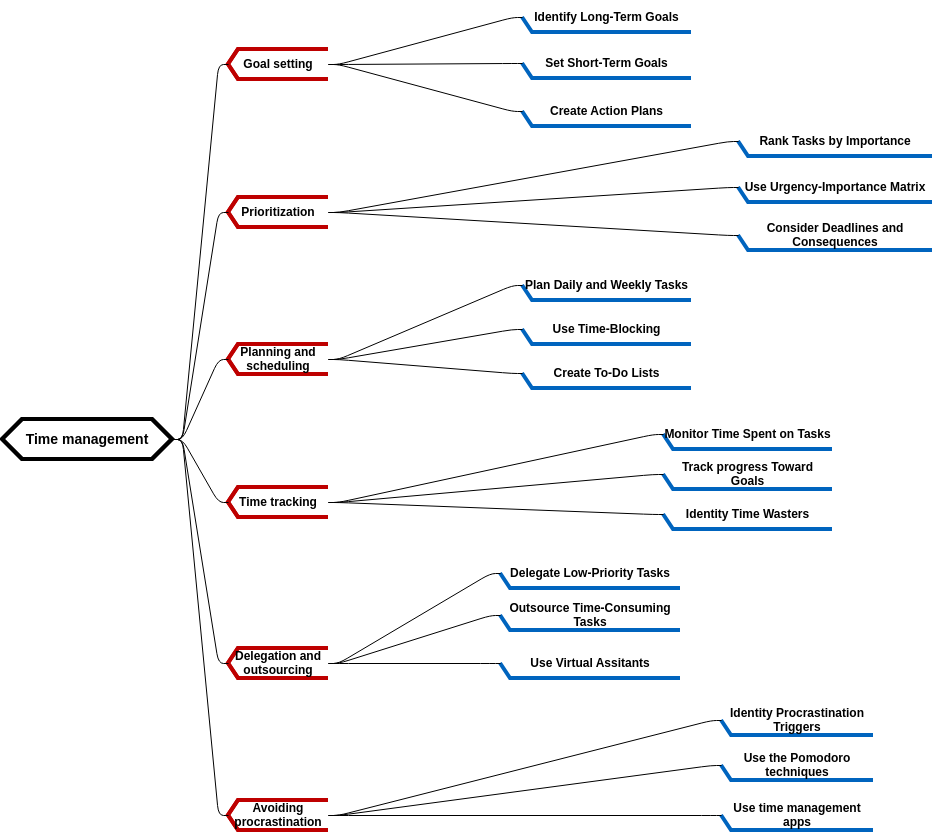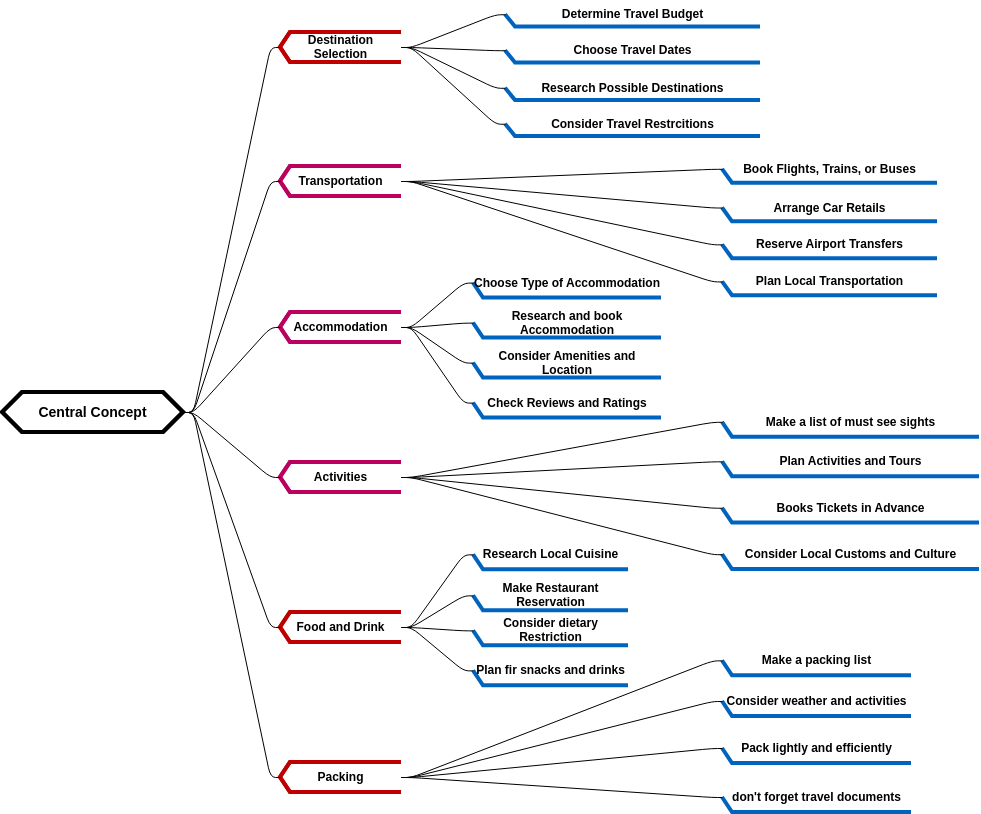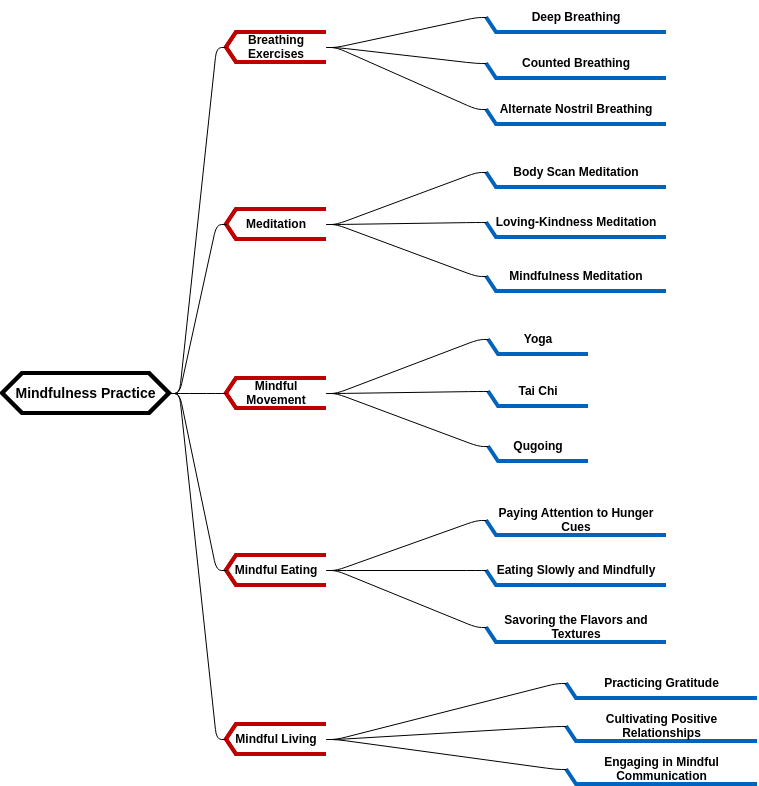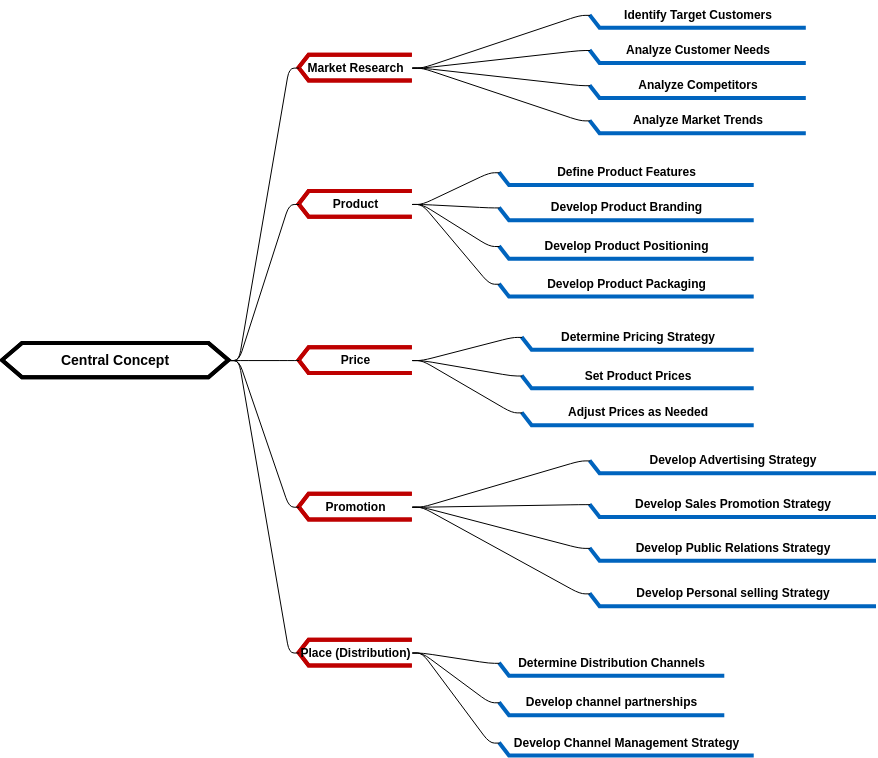Project Planning Mind Map
The Project Planning Mind Map encompasses crucial elements for successful project management. Firstly, "Project Scope" involves defining goals, objectives, and deliverables, setting clear boundaries, and establishing project direction.
Next, the "Schedule" category focuses on developing a comprehensive project timeline by breaking tasks down, estimating durations, and organizing them logically. This enables efficient resource allocation, dependency management, and progress monitoring.
The "Budget" category entails determining project costs, allocating resources, and identifying funding sources. It ensures financial feasibility, resource availability, and adherence to budget constraints throughout the project.
In addition, "Risk Management" involves identifying potential risks, assessing their impact, and devising contingency plans. This proactive approach minimizes disruptions, addresses uncertainties, and enhances project resilience.
Lastly, effective "Communication" is essential for project planning. Defining a communication plan with stakeholders, channels, and regular updates fosters collaboration, alignment, and engagement among project members.
Overall, the Project Planning Mind Map offers a concise yet comprehensive framework for successful project management. It covers project scope, schedule, budget, risk management, and communication—essential components for efficient planning and execution. By considering these elements, project managers can establish clear objectives, develop realistic timelines, allocate resources effectively, mitigate risks, and maintain strong communication channels.
Pros of creating this mind map
Creating this mind map for project planning offers several benefits. Firstly, it provides a visual representation of the key components and their interrelationships. The mind map allows project managers to see the big picture and understand how different elements of the project planning process connect. This visual clarity promotes better comprehension and helps in identifying any gaps or areas that need further attention. It ensures that all crucial aspects, such as project scope, schedule, budget, risk management, and communication, are considered and addressed effectively.
Secondly, the mind map encourages a structured and organized approach to project planning. By categorizing and mapping out the different components, project managers can ensure that each area receives proper attention and consideration. It serves as a guide that keeps the project planning process on track and helps in preventing important aspects from being overlooked. The mind map also promotes a systematic and comprehensive analysis of each component, enabling project managers to make informed decisions and develop robust strategies.
Furthermore, the mind map facilitates effective communication and collaboration among project stakeholders. By clearly outlining the communication plan and identifying the key communication channels, project managers can ensure that all relevant parties are informed and involved throughout the project. This promotes transparency, alignment, and engagement, leading to better coordination and successful project outcomes. The mind map serves as a communication tool that helps in conveying the project plan, goals, and progress to team members, clients, and other stakeholders.
If you require templates for designing flowcharts, consider visiting Visual Paradigm Online. They offer a variety of customizable templates to choose from.
